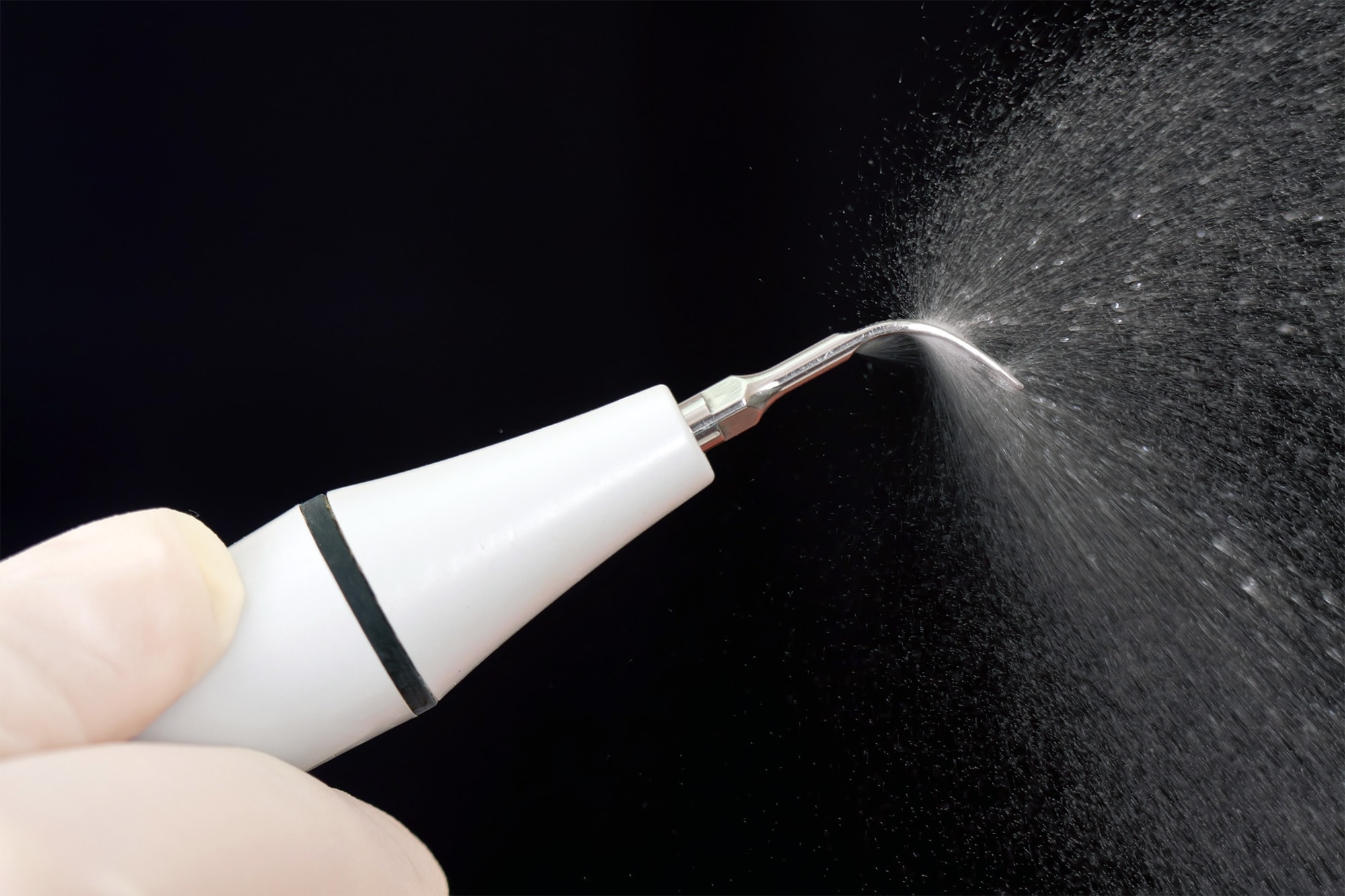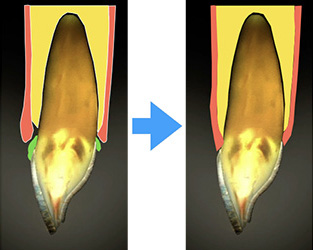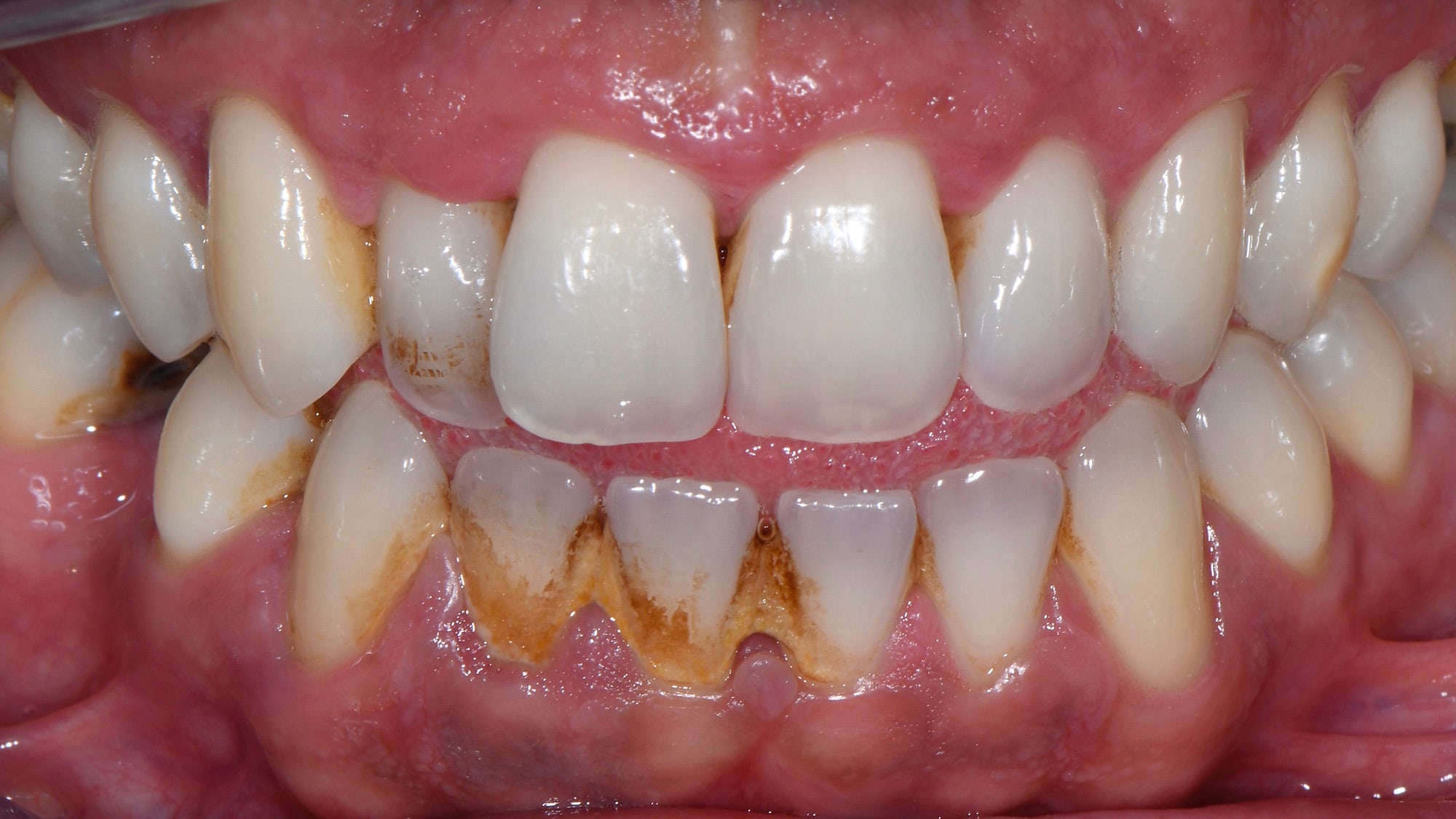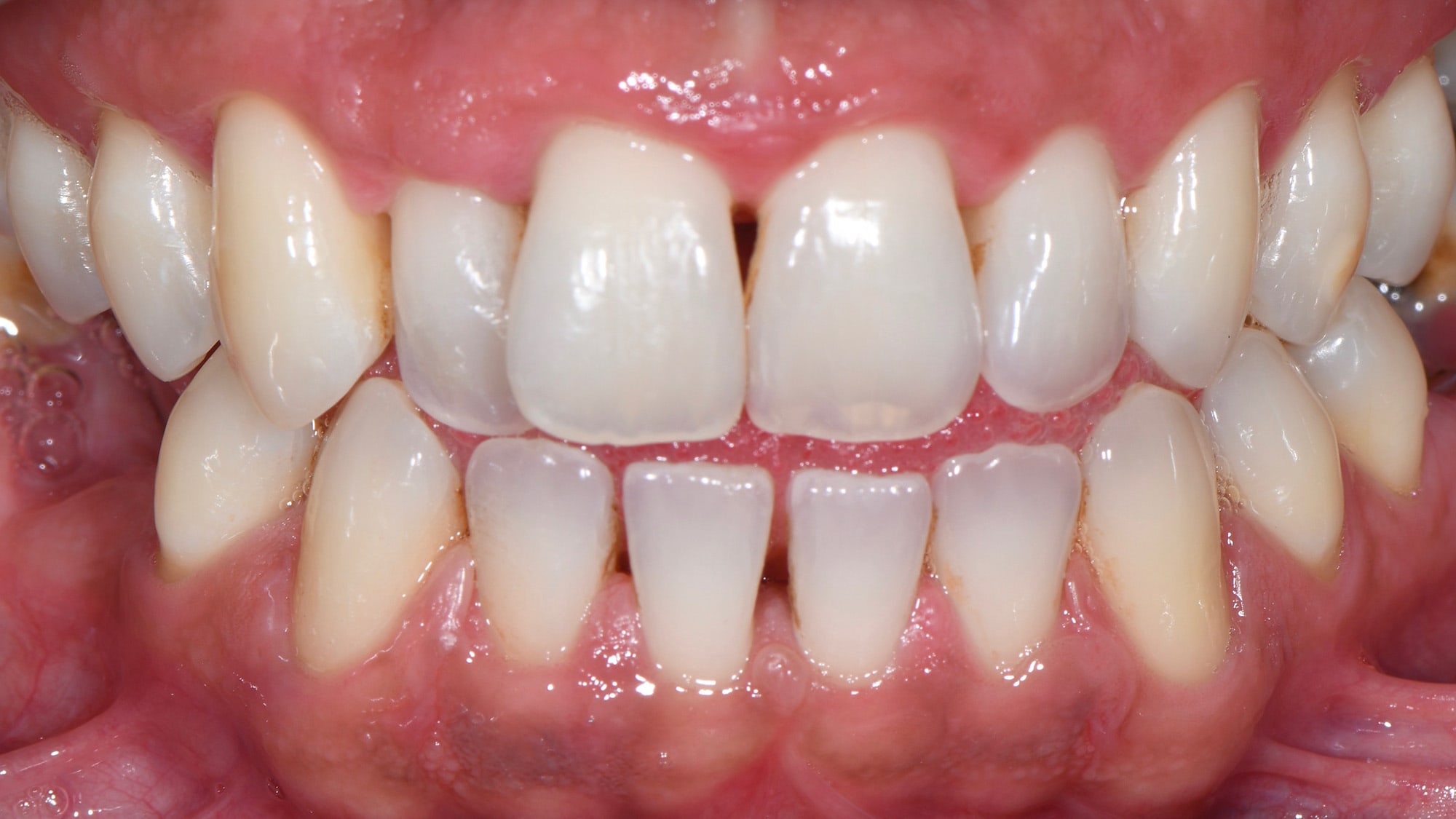
When plaque control (brushing) is insufficient, tartar builds up gradually around the teeth, especially in the interdental spaces.
It intrudes between the tooth and the gum, creating a periodontal pocket, where plaque-causing bacteria will grow, sheltered from teeth brushing. The clinical signs are bleeding gums (gingivitis), bad breath, and if the situation persists overtime, the teeth become loose and become mobile.

The periodontal treatment consists of removing tartar and bacterial toxins that have accumulated around the teeth, using an ultrasound and under local anesthesia, to ensure patient comfort.
It is always followed by a periodontal maintenance phase to stabilize the periodontal state overtime.
In the most severe cases, a surgical procedure called guided bone regeneration may be indicated to repair the bone that has resorbed around the teeth.
As a last resort, dental implants can allow us to replace unrecoverable teeth.



